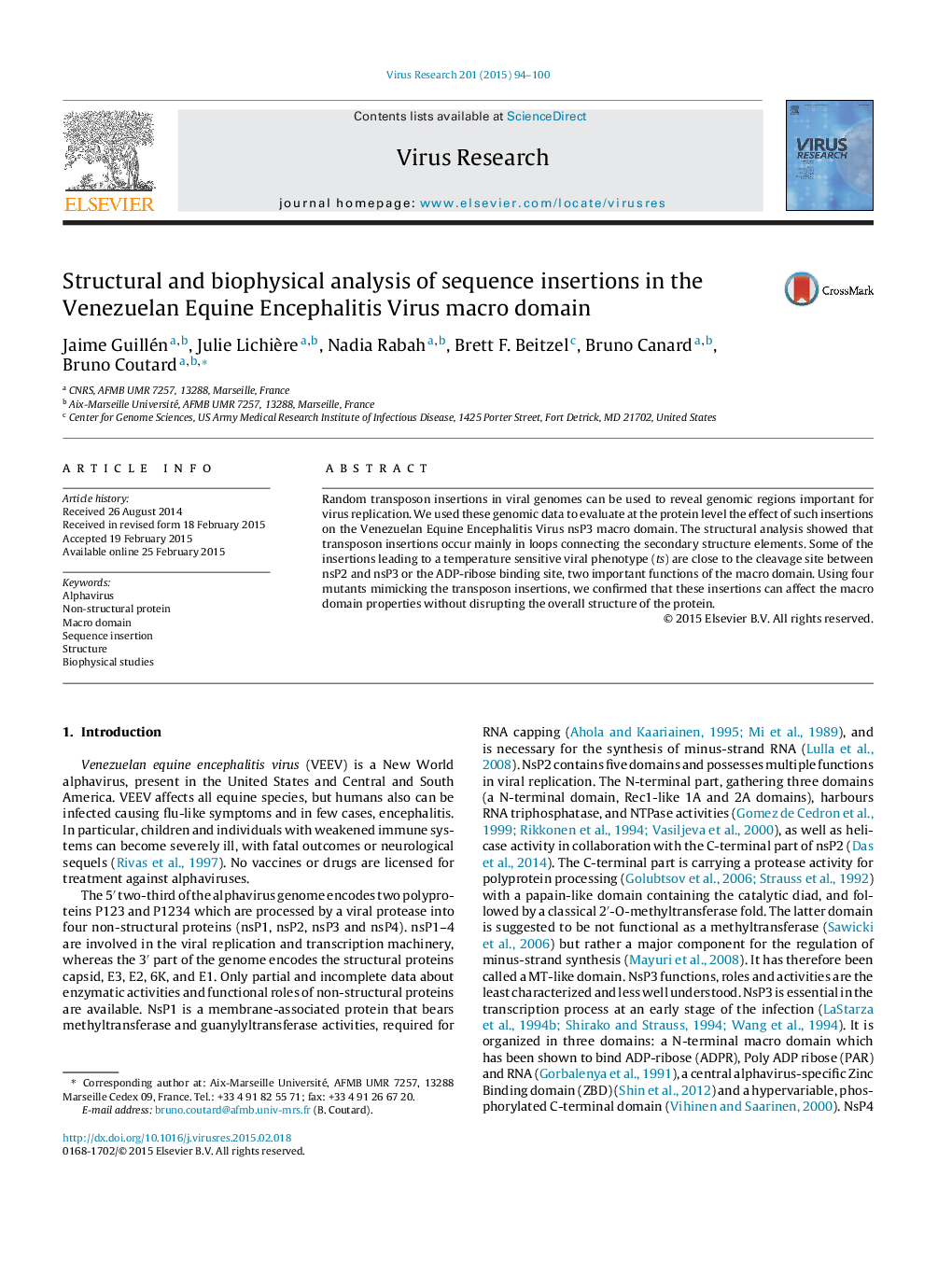| Article ID | Journal | Published Year | Pages | File Type |
|---|---|---|---|---|
| 3428166 | Virus Research | 2015 | 7 Pages |
•Five regions in nsP3 macro domain of VEEV can tolerate transposon insertions.•These regions are located in loops connecting the structural elements of the core domain.•The insertions leading to temperature sensitivity phenotype (ts) do not disturb the overall structure of the protein.•Two ts insertions are colocalized close to the P23 cleavage site of the polyprotein.•Three ts insertions affect ADP ribose binding of nsP3 macro domain.
Random transposon insertions in viral genomes can be used to reveal genomic regions important for virus replication. We used these genomic data to evaluate at the protein level the effect of such insertions on the Venezuelan Equine Encephalitis Virus nsP3 macro domain. The structural analysis showed that transposon insertions occur mainly in loops connecting the secondary structure elements. Some of the insertions leading to a temperature sensitive viral phenotype (ts) are close to the cleavage site between nsP2 and nsP3 or the ADP-ribose binding site, two important functions of the macro domain. Using four mutants mimicking the transposon insertions, we confirmed that these insertions can affect the macro domain properties without disrupting the overall structure of the protein.
